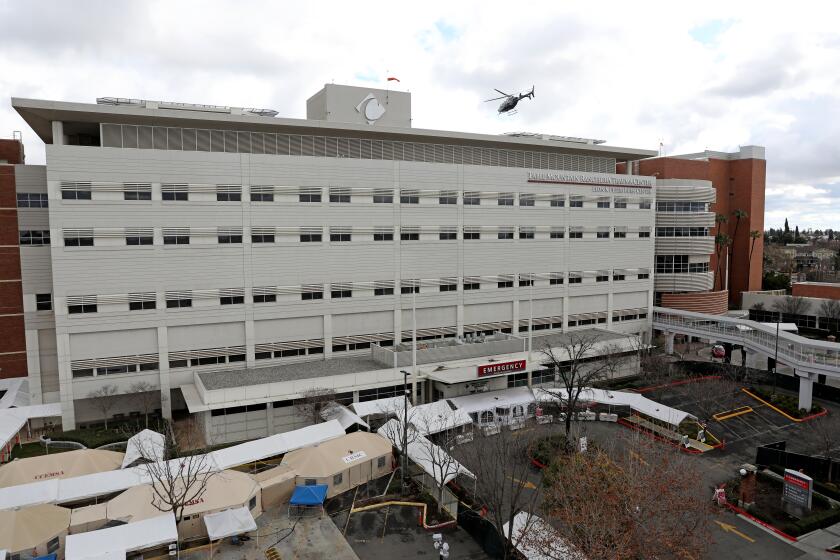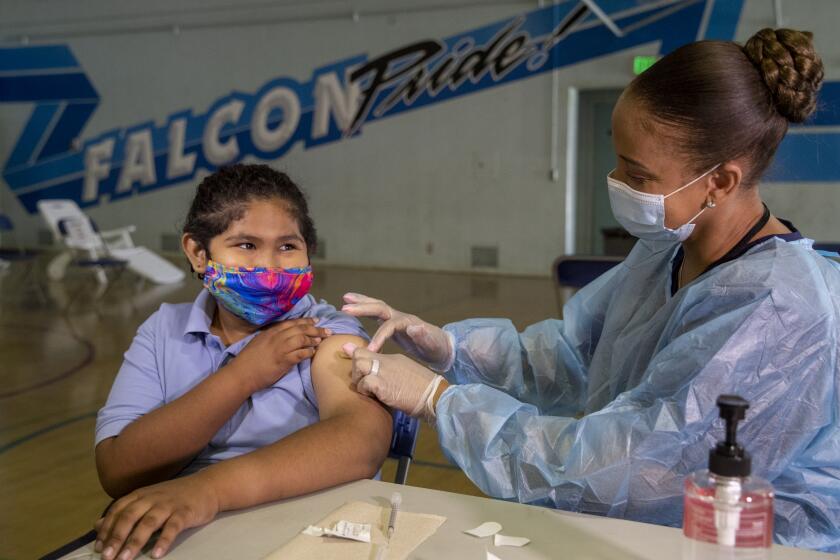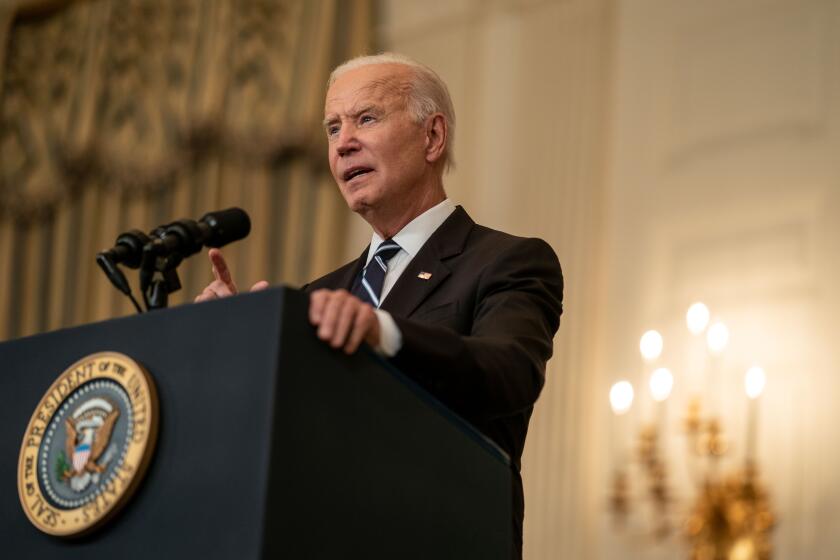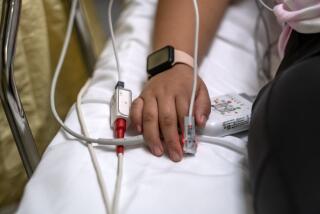Some Central Valley hospitals on the brink as COVID-19 surge hits crisis point
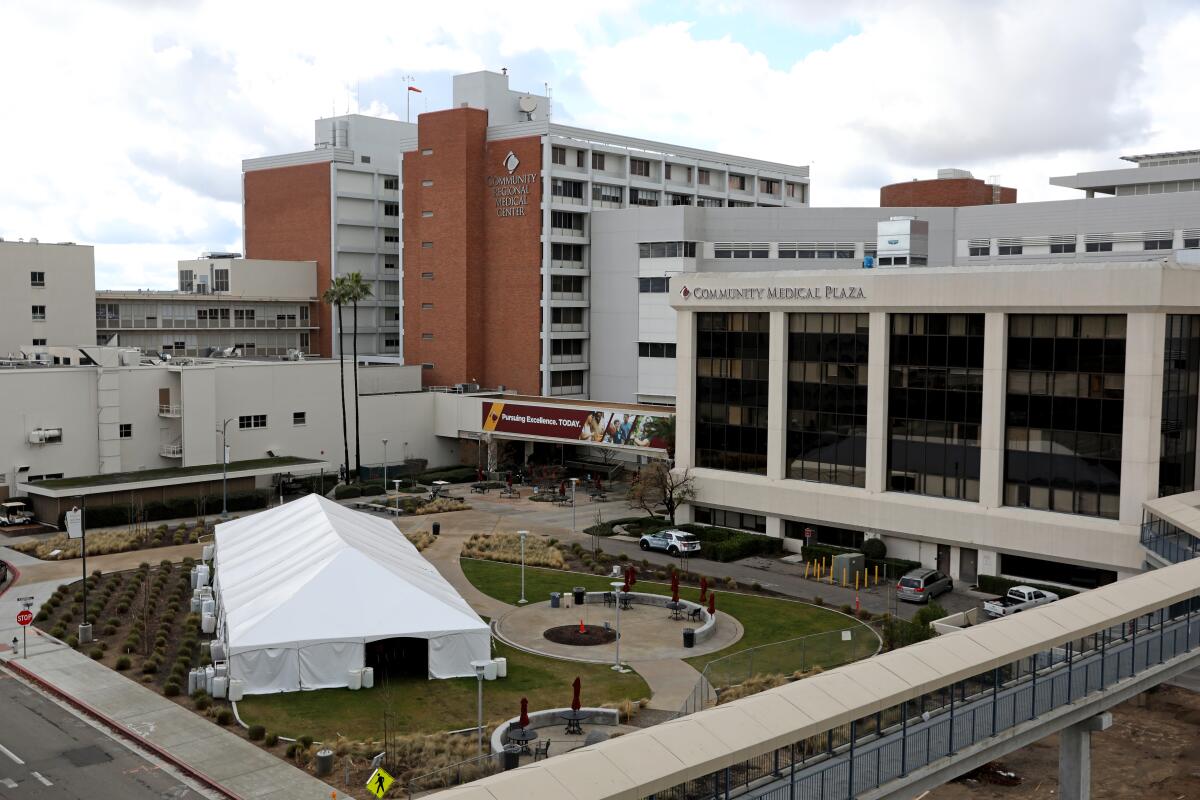
SACRAMENTO — The Delta variant surge reached critical levels in parts of the Central Valley this week, with some hospitals overwhelmed by a crush of COVID-19 patients and Fresno County officials warning they might take drastic action if conditions continue to deteriorate.
Parts of the Central Valley as well as rural Northern California have become the hot zones for COVID-19 in the state even as hospitalizations are beginning to fall in many parts of California, most dramatically in Southern California and the Bay Area, which generally have higher vaccination rates.
In a sign of how severe the crisis has become, Fresno County‘s health officer said Friday that hospitals may be forced to ration healthcare — choosing who receives lifesaving measures — because of dwindling resources.
“The largest hospital systems that we have here in the county are telling us that they are over 100% of their normal capacity, and some of them are as high as 140%, which is really pushing the surge standards and really almost tipping us into what we call the ‘crisis standards of care,’” Dr. Rais Vohra, Fresno County’s interim health officer, said Friday.
Fresno County’s flagship hospital, Community Regional Medical Center, is operating at 112% of its standard operating capacity, and a nearby sister hospital, Clovis Community Medical Center, is at 140%, Dan Lynch, director of the Central California Emergency Medical Services Agency, said at a news briefing.
More than half of Fresno County’s hospitalized COVID-19 patients are at Community Regional Medical Center. On Thursday, 404 COVID-19 patients were hospitalized in Fresno County, and by Friday, 248 were at Community Regional. According to the hospital, 88% of patients hospitalized for the virus are unvaccinated.
COVID-19 patients “continue to overwhelm our hospitals,” Michelle Von Tersch, a senior vice president for Community Medical Centers, which runs Community Regional and other hospitals in the region, said in a statement. “Staffing continues to be our greatest challenge as our patient volumes hit historic levels. We’re using all resources to bring in reinforcements.”
In California’s Central Valley, hospitals are filling with COVID-19 patients and health officials are raising alarms, saying things could get worse.
The San Joaquin Valley has California’s worst per capita rate of COVID-19 hospitalizations, with 38 COVID-19 hospitalizations for every 100,000 residents, according to a Times analysis.
Rural Northern California also is struggling with hospitalizations, with 33 COVID-19 hospitalizations for every 100,000 residents; the Greater Sacramento region has a rate of 28 hospitalizations per 100,000 residents; Southern California has a rate of 16 per 100,000, and the San Francisco Bay Area, 11.
Some health experts suggest ordering emergency COVID-19 measures, such as indoor mask mandates, when COVID-19 hospitalization rates hit 5 per 100,000 residents.
Other parts of the nation, largely in areas with relatively low vaccination rates, are also seeing hospitals overwhelmed. This week, Idaho public health leaders announced they have activated crisis standards of care, allowing healthcare rationing for the state’s northern hospitals because there are more COVID-19 patients than the institutions can handle.
Generally speaking, crisis standards of care are imposed when hospitals are unable to provide critical medical care to everyone who needs it, which would significantly increase the chances of patients dying as they wait for help.
Instead of trying everything to save a patient’s life, the goal during a crisis is to save as many patients as possible, meaning those less likely to survive will not receive the same level of care they would have otherwise. In such a situation, doctors no longer will pull out all the stops to save every life and instead will strategize how to keep as many people as possible from dying.
If crisis standards are declared, “there’s just a recognition that the standard of care for every single person may not be achievable,” Vohra said.
That means hospitals will be tasked with developing a system in which lifesaving resources can be distributed in a consistent manner. A crisis standards plan developed last year for Los Angeles County’s public hospitals outlined decisions that would be made by an appointed triage officer on who would receive care and who would not.
Under L.A. County’s plan — which was never implemented during the winter surge — patients who received a scarce resource would be given up to two days to determine whether care was helping, at which point they would be reassessed to determine whether the treatment should continue. If the patient did not show improvement or got worse, the resource could be reallocated.
“Those are obviously very hard decisions, they’re very stressful decisions for us to make and very hard conversations to have with families,” Vohra said.
The pandemic is now hitting hardest in the San Joaquin Valley, the Sacramento area and rural Northern California, in terms of per capita hospitalizations.
Though in some regions, hospitals could decide individually to announce the implementation of crisis standards of care, it’s possible that Fresno County may do so as a county, Vohra said.
“I think it would make most sense to declare it as a county, or possibly even as a region, just because we work together and coordinate so much across the different facilities,” Vohra said. “But these are conversations that we would need to have with all of the hospitals to say … are we all at a point where we all need to declare our crisis standards together?”
Intensive care units in Fresno County are so overwhelmed that officials have had to transfer about 10 critically ill patients out of the region, to as far as Watsonville in Santa Cruz County, a 140-mile drive from Fresno, as well as to Stanford Hospital in the Bay Area and UC Davis Medical Center in Sacramento, each 170 miles away. Some patients have had to be transported by helicopter.
To cope with the overcrowding, patients who need admission to a hospital room must wait in the emergency room, Lynch said, and that’s causing wait times to increase for those with less severe illnesses.
Across the San Joaquin Valley, where more than 4 million people live, the share of available adult ICU beds has been below 10% for 10 straight days, prompting the state to extend previously ordered surge protocols that stipulate general acute-care hospitals must accept transfer patients if directed — provided that they have room and that doing so is considered “clinically appropriate” — and facilities outside the region also have to be prepared to accept transfers, should conditions warrant.
Additional medical staffers are expected to arrive soon to help Fresno County. Lynch said he worked with state officials and expects to receive some kind of federal medical team, perhaps 16 people, to assist at Community Regional Medical Center, and perhaps another team sent to Kern County, home to Bakersfield, which is “also having a real difficult time right now.”
In Bakersfield, hospital officials expect a boost in hospitalizations related to transmission over the Labor Day weekend.
“The latest forecasting model shows Kern County’s anticipated peak to hit late September,” said Michelle Willow, spokesperson for the three Dignity Health hospitals there: Mercy Hospital Downtown, Mercy Hospital Southwest and Memorial Hospital.
In Fresno County, Community Medical Centers is expecting an Army National Guard medical strike team next week, Von Tersch said.
The additional staffing will help, Lynch said, as the shortage of resources is not one of physical space but of trained healthcare providers. “They still have the ability to add more surge, as long as they had more staffing,” Lynch said.
L.A. Times data show coronavirus cases slowing in the state, led by improvements in Southern California and the Bay Area, but more rural areas continue to struggle.
Vohra said all indications are that patient demand will remain high for at least the next few weeks.
Generally, the areas of California that are doing the worst in the latest COVID-19 surge are those with low vaccination rates. Among people 12 and older, 64% are vaccinated with at least one dose in Fresno County; in L.A. County, 75% have been vaccinated; and in San Francisco, 87% have received at least one shot.
Fresno County also has not adopted a mandatory mask order in indoor public settings, as has L.A. County and most of the Bay Area, leaving public health officials to plead with the public to wear them voluntarily.
“We’re begging you, on behalf of the healthcare system,” Vohra said recently. “If you want to know how you can be sure that your loved one has a bed in the hospital tonight if they have a heart attack, then wear a mask.
“Please wear a mask everywhere you go … because we’re seeing extraordinary levels of transmission whenever people are gathering indoors,” Vohra added.
He also urged people to get vaccinated.
“We really need everyone who is eligible to get vaccinated to step up. Now is the time,” Vohra said. “You’re just in so much danger if you’re not vaccinated right now.”
President Biden expands vaccine mandates as frustration grows over the lingering COVID-19 pandemic.
According to COVID-19 computer models published by the state Department of Public Health, the number of COVID-19 patients hospitalized in the San Joaquin Valley will probably remain at a high level before starting to fall later this month, meaning there probably will be more weeks of relentless pressure on the hospital system. Hundreds more COVID-19 deaths are expected by the end of the month.
Monthly deaths have soared in the San Joaquin Valley. There were 93 deaths in July, and in August, there were 311. For the first nine days of September, at least 139 deaths have been reported.
The harrowing situation in the San Joaquin Valley comes even as California, as a whole, has seen COVID-19 hospitalizations drop dramatically since the end of August.
Statewide, 7,360 coronavirus-positive patients were hospitalized Thursday — down from 8,221 on Sept. 2, a 10% decrease, state data show. COVID-19 hospitalizations fell in Southern California by 13%, the Greater Sacramento area by 12%, the Bay Area by 11%, and rural Northern California by 7%.
But hospitalizations fell the least in the San Joaquin Valley, dropping by only 2%. And they increased 3% in Fresno County, from 393 people hospitalized on Sept. 2 to 404 on Thursday. Of those, 88 were in the ICU.
As of Wednesday, only 8.2% of staffed adult ICU beds were available throughout the entire region — which the state defines as Calaveras, Fresno, Kern, Kings, Madera, Mariposa, Merced, San Benito, San Joaquin, Stanislaus, Tulare and Tuolumne counties.
More to Read
Sign up for Essential California
The most important California stories and recommendations in your inbox every morning.
You may occasionally receive promotional content from the Los Angeles Times.

